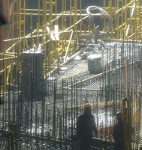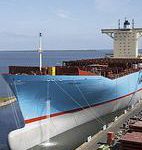After the 2008 Olympic Games, Beijing’s strategy for dealing with waste disposal overtook transport and air quality to become the environmental issue attracting the most media attention and public engagement in the Chinese capital.
In early August, a group of 30 journalists and concerned citizens, organised by the Sohu environment channel, chinadialogue and others, visited the landfill sites at Asuwei and Gao’antun to see how Beijing’s waste is being dealt with.
Opened in 1994, Asuwei was Beijing’s first landfill site. Today it receives 3,800 tonnes of waste every day, more than double its designed capacity of 1,800 tonnes. Construction of an incineration plant is due to start at the end of the year. Since measures to prevent seepage of water from the site have been ineffective, leachate from the site contaminates the groundwater. Media reports have drawn a possible link between this and high illness rates in surrounding residential areas.
In the 1980s, locals at Gao’antun used the site as a dump. In 1995 it became an official landfill site. An incinerator, constructed before the Olympics last year, is still being tested. On August 30, 2008, hundreds of angry residents took to the streets holding placards and wearing masks to protest the stench from the site. The government quickly dealt with the problem of the smell: they covered the site with plastic membrane, sprayed chemical deodorisers and redirected some of the waste to other sites at Asuwei and Beishenshu to reduce the load on the plant.
However, measures such as using plastic membrane – which is easily damaged – and shifting processing to other areas do not solve the root causes of the problem. Although the Asuwei and Beishenshu sites may be further from residential areas, the foul odours still exist, especially at the overloaded Asuwei site. One of the organisers of the Gao’antun protests, Zhao Lei, remains unhappy with the government’s handling of the problem and continues to make representations.
On June 5, 2007, local residents – tormented by the smell from the overloaded Liulitun landfill site in Haidian – protested outside the State Environmental Protection Administration (now the Ministry of Environmental Protection). In July 2009, the Haidian authorities announced that the landfill would close four years early, with an incinerator planned at the same location. But the residents oppose this move, due to the threat of carcinogenic dioxins. Today the fate of the site remains undecided.
According to the Beijing Municipal Commission of City Administration, the capital produced an average of 18,400 tonnes of rubbish every day in 2008, a figure that is increasing by 8% a year. It is estimated this will increase to 25,000 tonnes per day in 2012 and 30,000 tons by 2015, by which point all of Beijing’s landfill sites will be full.
Faced with increasing amounts of rubbish, the Beijing government started trying to sort waste in 1996; Global Village, an NGO, ran sorting trials in communities in the capital. But 10 years later, rubbish is still being buried unsorted.
Rubbish bins in Beijing’s public areas are marked with “recyclable” or “non-recyclable”, but everyone knows that it all ends up buried in the same place. The equipment and systems needed for separate transportation and processing of rubbish are not in place. Sorting never caught on.
“We are rapidly adding new facilities,” Wei Panming, deputy director of the facilities department at Beijing Municipal Commission of City Administration, recently explained, “but the amount of waste is increasing quickly, too – so there is pressure. We need to use rubbish sorting at source and recycling to reduce quantities by 1% or 2% per year, with zero growth by 2015.” This marks a new round of government promotion of rubbish sorting, but there has not yet been any progress on implementation.
Some NGOs would like to emulate the Japanese example: careful sorting of waste into specific categories as the ultimate goal, with rough sorting to start with. But Zhang Jingzhi, general manager at waste disposal firm Hejia Resources, says there is no need for excessive sorting. “Separating out organic waste such as leftover food is excellent, but everything else can be sorted by machinery at the plant. Why spend so much sorting it out at source?” He also thinks the definitions of “recyclable” and “non-recyclable” are problematic. Most people would not think of a rotten apple as recyclable, he says, “but for me, that rotten apple can be reused. It will make great fertiliser.”
Despite a decade of calls for even simple waste-sorting, China still lacks a clear and workable system. The country’s 600 cities produce almost 150 million tonnes of waste every year; most of these cities have trouble dealing with it.
Many cities, including Beijing, are looking to incinerators as a quick way to reduce landfill. This may be the most controversial method of dealing with rubbish, in Beijing and elsewhere. However, Wei says that there is no technical reason not to build incineration plants in Beijing at European Union standards, and that heavy metal pollution is accumulative: “you do not get poisoned if you just eat a little bit.” NGOs, local residents and some experts do not agree. Incineration, they point out, has often been abandoned overseas. If the make-up of the rubbish is so varied, it may not be suitable for incineration. Can suitable sites be chosen – and will the plants run correctly?
According to the Beijing city government, their aim is to increase waste disposal capacity, adjust the make-up of that capacity and promote reduction of the overall quantity of waste. Wei explains that this adjustment means shifting from a 2:3:5 ratio of incineration, biological processing and landfill in 2012, with no burial of unprocessed urban waste, to a 4:3:3 ratio by 2015.
Says Wei: “Not all rubbish burns. Different types of rubbish will be handled differently, as long as pollution and costs are controlled – and the final results are good.” But the government, businesses and the public have different ideas about what represents a good result, and the public have little faith in expert opinions. The debate over incineration will test the wisdom of all parties.
In any case, incineration in China is on the rise. “It is needed – the country does need to increase the percentage of waste that is incinerated. Over the next year or two we will be building several large waste-to-energy generators,” says Zhang. “The plants either operate under a build-operate-transfer model, with the government subsidising rubbish processing, or a profit model, with subsidy coming from the sale of electricity to the national grid.”
For local governments desperate to find a way of dealing with their rubbish, subsidies from the electricity firms are a way to do it at no cost, simply by licensing a waste-to-energy generator.
“Government franchising of these plants provides a platform for the public and private sectors to cooperate on waste processing, with franchises possible for collection, transportation and processing,” says franchising expert, Xu Zongwei. “Investment is significant and the return period is long. If private firms get involved they need to be clear on the difficulties and risks that may exist.”
However, Fu Tao, deputy chair of the China Environment Service Industry Association, stresses that “handling rubbish is one of the functions of government. It is still a public service. The government can invite others to help, but that does not absolve it of responsibility.”
Huo Weiya is operations and development manager for chinadialogue in Beijing and former editor-in-chief of Environmental Culture Newsletter, published by Green Student Forum, an environmental NGO established in 1996.
Homepage image from Green Sohu


